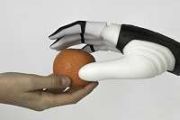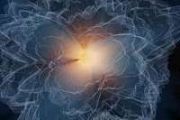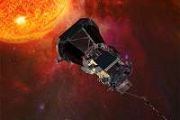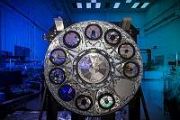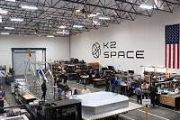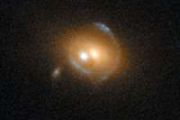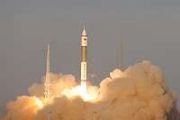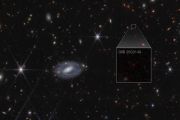
Copernical Team
Clouds play key role in moderating Earth's surface warming
 McGill University researchers have revealed that changes in cloud cover are helping to slightly counteract global warming. While greenhouse gases continue to drive temperatures upward, a reduction in low-cloud cover over land has contributed to a small decrease in the amount of heat retained near the Earth's surface.
"We started this research to observationally verify the increase of green
McGill University researchers have revealed that changes in cloud cover are helping to slightly counteract global warming. While greenhouse gases continue to drive temperatures upward, a reduction in low-cloud cover over land has contributed to a small decrease in the amount of heat retained near the Earth's surface.
"We started this research to observationally verify the increase of green Solar Observatory sees coronal loops flicker before big flares
 For decades, scientists have tried in vain to accurately predict solar flares - intense bursts of light on the Sun that can send a flurry of charged particles into the solar system. Now, using NASA's Solar Dynamics Observatory, one team has identified flickering loops in the solar atmosphere, or corona, that seem to signal when the Sun is about to unleash a large flare.
These warning signs
For decades, scientists have tried in vain to accurately predict solar flares - intense bursts of light on the Sun that can send a flurry of charged particles into the solar system. Now, using NASA's Solar Dynamics Observatory, one team has identified flickering loops in the solar atmosphere, or corona, that seem to signal when the Sun is about to unleash a large flare.
These warning signs NASA celebrates Edwin Hubble's discovery of a new universe
 For humans, the most important star in the universe is our Sun. The second-most important star is nestled inside the Andromeda galaxy. Don't go looking for it - the flickering star is 2.2 million light-years away, and is 1/100,000th the brightness of the faintest star visible to the human eye.
Yet, a century ago, its discovery by Edwin Hubble, then an astronomer at Carnegie Observatories,
For humans, the most important star in the universe is our Sun. The second-most important star is nestled inside the Andromeda galaxy. Don't go looking for it - the flickering star is 2.2 million light-years away, and is 1/100,000th the brightness of the faintest star visible to the human eye.
Yet, a century ago, its discovery by Edwin Hubble, then an astronomer at Carnegie Observatories, Fresh, direct evidence for tiny drops of quark-gluon plasma
 A new analysis of data from the PHENIX experiment at the Relativistic Heavy Ion Collider (RHIC) reveals fresh evidence that collisions of even very small nuclei with large ones might create tiny specks of a quark-gluon plasma (QGP). Scientists believe such a substance of free quarks and gluons, the building blocks of protons and neutrons, permeated the universe a fraction of a second after the B
A new analysis of data from the PHENIX experiment at the Relativistic Heavy Ion Collider (RHIC) reveals fresh evidence that collisions of even very small nuclei with large ones might create tiny specks of a quark-gluon plasma (QGP). Scientists believe such a substance of free quarks and gluons, the building blocks of protons and neutrons, permeated the universe a fraction of a second after the B Sierra Space resilient GPS Satellite Program achieves major development milestone
 Sierra Space, a leading commercial space enterprise and defense technology provider, has announced a significant milestone for its Resilient GPS (R-GPS) program with the successful completion of the Systems Requirements Review (SRR). This accomplishment marks a critical step forward in the initiative, which aims to enhance the resilience of U.S. satellite infrastructure to benefit both civilia
Sierra Space, a leading commercial space enterprise and defense technology provider, has announced a significant milestone for its Resilient GPS (R-GPS) program with the successful completion of the Systems Requirements Review (SRR). This accomplishment marks a critical step forward in the initiative, which aims to enhance the resilience of U.S. satellite infrastructure to benefit both civilia BlackSky secures $200M Luno B contract
 BlackSky Technology Inc. (NYSE: BKSY) has been named as a key vendor by the National Geospatial-Intelligence Agency (NGA) for its $200 million Luno B commercial data indefinite delivery, indefinite quantity (IDIQ) contract.
The Luno B initiative is designed to provide the national security sector with rapid access to high-quality commercial geospatial intelligence (GEOINT). The contract su
BlackSky Technology Inc. (NYSE: BKSY) has been named as a key vendor by the National Geospatial-Intelligence Agency (NGA) for its $200 million Luno B commercial data indefinite delivery, indefinite quantity (IDIQ) contract.
The Luno B initiative is designed to provide the national security sector with rapid access to high-quality commercial geospatial intelligence (GEOINT). The contract su Exoplanets face challenges from intense space weather
 New research from NASA's Chandra X-ray Observatory and ESA's XMM-Newton highlights the harsh space weather that planets around other stars may face. The study focused on the impact of X-rays on potential planets orbiting red dwarf stars, which are the most common type of star in the universe.
The findings suggest that only planets with atmospheres rich in greenhouse gases, such as carbon d
New research from NASA's Chandra X-ray Observatory and ESA's XMM-Newton highlights the harsh space weather that planets around other stars may face. The study focused on the impact of X-rays on potential planets orbiting red dwarf stars, which are the most common type of star in the universe.
The findings suggest that only planets with atmospheres rich in greenhouse gases, such as carbon d The Moon a remnant of Earth's mantle
 A collaborative study by researchers from the University of Gottingen and the Max Planck Institute for Solar System Research (MPS) has offered new insights into the formation of the Moon and the origins of Earth's water. The findings challenge long-standing assumptions about the Moon's origin and propose that it may have formed primarily from material ejected from Earth's mantle, with minimal co
A collaborative study by researchers from the University of Gottingen and the Max Planck Institute for Solar System Research (MPS) has offered new insights into the formation of the Moon and the origins of Earth's water. The findings challenge long-standing assumptions about the Moon's origin and propose that it may have formed primarily from material ejected from Earth's mantle, with minimal co Asteroid impact sulfur release less lethal in dinosaur extinction
 Approximately 66 million years ago, a massive asteroid known as the Chicxulub impactor struck the Yucatan Peninsula in present-day Mexico. Measuring an estimated 10 to 15 kilometers in diameter, the asteroid left a colossal 200-kilometer-wide crater. This event triggered rapid climate changes that ultimately caused the extinction of non-avian dinosaurs and about 75% of Earth's species. A signifi
Approximately 66 million years ago, a massive asteroid known as the Chicxulub impactor struck the Yucatan Peninsula in present-day Mexico. Measuring an estimated 10 to 15 kilometers in diameter, the asteroid left a colossal 200-kilometer-wide crater. This event triggered rapid climate changes that ultimately caused the extinction of non-avian dinosaurs and about 75% of Earth's species. A signifi NASA scientists find new human-caused shifts in global water cycle
 In a recently published paper, NASA scientists use nearly 20 years of observations to show that the global water cycle is shifting in unprecedented ways. The majority of those shifts are driven by activities such as agriculture and could have impacts on ecosystems and water management, especially in certain regions.
"We established with data assimilation that human intervention in the glob
In a recently published paper, NASA scientists use nearly 20 years of observations to show that the global water cycle is shifting in unprecedented ways. The majority of those shifts are driven by activities such as agriculture and could have impacts on ecosystems and water management, especially in certain regions.
"We established with data assimilation that human intervention in the glob 








